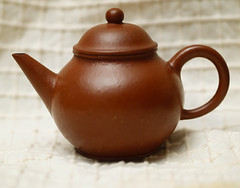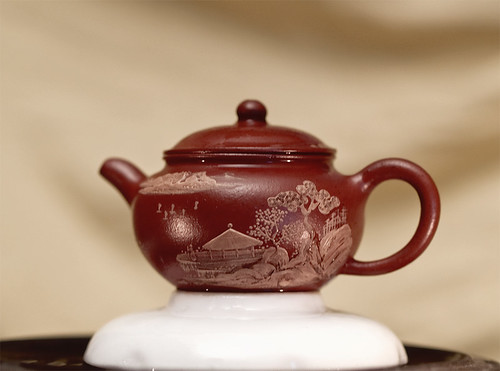 First of all, what exactly is a Yixing Tea Pot? It is a clay teapot made with clay originally from the Eastern province of Yixing in China. During the mid 1500’s a monk from the region began hand crafting tea pots from this particular clay. Being very elegant and high quality, these became favourites among scholars and other influential people in China and were much sought after. Today, most of the teapots are made in Dingshan — which is part of the Yixing area.
First of all, what exactly is a Yixing Tea Pot? It is a clay teapot made with clay originally from the Eastern province of Yixing in China. During the mid 1500’s a monk from the region began hand crafting tea pots from this particular clay. Being very elegant and high quality, these became favourites among scholars and other influential people in China and were much sought after. Today, most of the teapots are made in Dingshan — which is part of the Yixing area.
There are several reasons why these teapots are so popular. Many, especially those made hundreds of years ago, are considered national treasures. Hand made teapots are usually more expensive than those that are mass produced using a mould. Other factors determining price include the artist who crafted the teapot, the design, age and the type of clay used. Very much a tea collectors item, they are also very good reasons for choosing a Yixing teapot for brewing especially oolong or black tea.
During the steeping process, amounts of the tea seep into the porous clay so that eventually, with use, a film coats the inside of the teapot which helps to retain both the taste and even the colour of the tea as well. For this reason it is usually recommended that only one type of tea is brewed with each teapot, as eventually it will enhance the flavour of the tea even more. This is why you may well see many small Yixing teapots on display when sharing a cup of tea with a dedicated loose leaf tea drinker.
 There are standard types of teapots, such as the one shown at the top of this post, and there are more highly decorative types such as the one you can see to the right of this paragraph. You can also find Yixing drinking cups and other ornamental items — though the tea pot is perhaps the most famous and widely known item made from Yixing clay.
There are standard types of teapots, such as the one shown at the top of this post, and there are more highly decorative types such as the one you can see to the right of this paragraph. You can also find Yixing drinking cups and other ornamental items — though the tea pot is perhaps the most famous and widely known item made from Yixing clay.
Is Shape Important?
Yes, shape can be an important consideration. The main thing is that the water is able to circulate freely around the tea leaves. For this reason, the cauldron shaped teapot is a favourite and you really won’t go wrong in buying one of this shape.
Other Considerations
You may want to make sure that the lid of the teapot fits snug onto the top of the teapot. Some of the better made ones actually create a little vacuum when the lid is taken off. The spout should be well formed, you don’t want tea dribbling down or around the spout when you are trying to pour a cup of tea!
Preparing the Teapot for Use
Thanks to a post I have just read on the Tea Guardian site, I have learned something new–that is how to properly prepare a teapot for first time use. You can pop over and read it yourself if you like, otherwise here is a summary of Leo Kwan‘s tips:
- Rinse the pot in water
- Totally submerge the pot (and tea lid) underneath water and let soak overnight
- The following morning, rinse the teapot with fresh water again. Fill a deep saucepan with water, set on the stove and completely submerge the teapot in this water. Boil the teapot in the water for five minutes.
- Finally to actually prime the teapot you pop it back on the stove, submerged in a large pot of water and bring the water to the boil. Once it comes to the boil, turn the stove plate off and pop in tea leaves of the type of tea you are going to brew in this particular teapot. Steep the tea pot in the tea over night.
- Lastly, rinse the pot again in fresh water the next morning and set it down to dry naturally.
Your Yixing teapot is now ready to use! Remember, one type of tea per teapot whenever possible in order to get the optimum taste from your cup of tea.